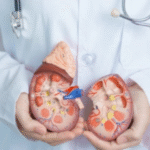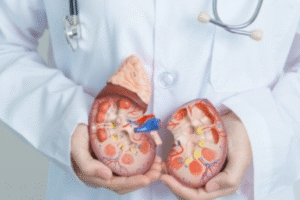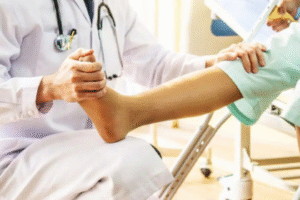1. Introduction to 12-Lead ECG
A 12-lead electrocardiogram (ECG) is a vital diagnostic tool used to assess the electrical activity of the heart. Proper preparation is essential to ensure accurate and reliable results.
2. Patient Preparation
Before obtaining a 12-lead ECG, ensure that the patient is comfortable and adequately informed about the procedure. Explain the process and address any concerns or questions they may have.
3. Verify Patient Identity
Confirm the patient’s identity using at least two unique identifiers, such as their full name and date of birth, to prevent errors in documentation and ensure accurate medical record keeping.
4. Positioning the Patient
Position the patient comfortably in a supine position with their chest exposed. Ensure that they are relaxed and lying still to minimize motion artifacts during the ECG recording.
5. Skin Preparation
Clean the skin at the electrode placement sites to remove oils, dirt, and dead skin cells that may interfere with electrode adherence and signal transmission. Use alcohol wipes or soap and water followed by drying the skin thoroughly.
6. Electrode Placement
Attach the ECG electrodes to the designated anatomical landmarks on the patient’s chest, arms, and legs according to the standard 12-lead configuration. Ensure proper placement for accurate lead acquisition and interpretation.
7. Limb Electrodes
Place the limb electrodes on the patient’s wrists and ankles, positioning them proximal to the joints to minimize movement artifacts. Secure the electrodes firmly to maintain contact with the skin throughout the recording.
8. Chest Electrodes
Position the chest electrodes (precordial leads) on the patient’s chest following the recommended anatomical landmarks. Ensure consistent placement and adequate skin contact to capture electrical signals from the heart.
9. Lead Placement Diagram
Refer to a lead placement diagram or mnemonic device to ensure correct electrode placement for each of the 12 leads. Verify the positioning visually before initiating the ECG recording.
10. Lead Labeling
Label each lead on the ECG tracing with the corresponding anatomical location (e.g., lead I, lead II, V1-V6) to facilitate interpretation by healthcare providers and ensure accurate diagnosis of cardiac abnormalities.
11. Electrode Connection
Connect the ECG electrodes to the leads of the ECG machine, ensuring secure attachment and proper alignment with the designated input channels. Check for loose connections or frayed wires that may affect signal quality.
12. Patient Cooperation
Encourage the patient to remain still and relax throughout the ECG recording to minimize artifacts and ensure optimal signal quality. Provide reassurance and support as needed to promote cooperation.
13. Adjusting Machine Settings
Set the appropriate parameters on the ECG machine, including paper speed, gain, and filter settings, to optimize signal visualization and recording quality. Verify that the machine is calibrated and functioning correctly before proceeding.
14. Initiating ECG Recording
Initiate the ECG recording according to the manufacturer’s instructions, ensuring that the machine is properly configured to acquire data from all 12 leads simultaneously. Monitor the recording for any technical issues or abnormalities.
15. Recording Duration
Record the ECG tracing for the recommended duration, typically 10 seconds per lead, to capture a comprehensive snapshot of the heart’s electrical activity across all 12 leads. Extend the recording if necessary to assess dynamic changes or arrhythmias.
16. Artifact Recognition
Monitor the ECG tracing for artifacts such as muscle tremors, baseline wandering, or electrode interference, which may obscure the underlying cardiac rhythm and require corrective action or repeat testing.
17. Patient Monitoring
Continue to monitor the patient’s condition and vital signs throughout the ECG recording process to detect any signs of distress or complications. Be prepared to intervene promptly if adverse events occur.
18. Quality Assurance
Review the completed ECG tracing for clarity, signal quality, and consistency of waveform morphology. Verify that all leads are adequately represented and free from artifacts before finalizing the recording.
19. Documentation
Document the details of the 12-lead ECG procedure in the patient’s medical record, including the date and time of the recording, electrode placement sites, machine settings, and any relevant clinical information or observations.
20. Interpretation by Healthcare Provider
Forward the ECG tracing to a qualified healthcare provider for interpretation and analysis. Collaborate with the provider to identify any abnormalities or significant findings that may require further evaluation or intervention.
21. Patient Education
Educate the patient about the significance of the ECG results and any implications for their cardiac health. Discuss the importance of follow-up appointments and adherence to treatment recommendations as advised by their healthcare provider.
22. Equipment Maintenance
Clean and disinfect the ECG machine and electrodes according to established protocols after each use to prevent cross-contamination and maintain equipment integrity. Perform routine maintenance and calibration as recommended by the manufacturer.
23. Continuing Education
Stay updated on current guidelines and best practices for performing and interpreting 12-lead ECGs through ongoing education and training opportunities. Enhance your skills and proficiency to deliver high-quality patient care.
24. Quality Improvement Initiatives
Participate in quality improvement initiatives aimed at optimizing the accuracy, efficiency, and reliability of 12-lead ECG acquisition and interpretation within healthcare settings. Share feedback and contribute to process improvements as part of a multidisciplinary team.
25. Conclusion
Obtaining a 12-lead ECG requires careful preparation, attention to detail, and adherence to established protocols to ensure accurate and reliable results. By following these essential steps, healthcare providers can obtain high-quality ECG recordings and contribute to optimal patient care and clinical outcomes.














